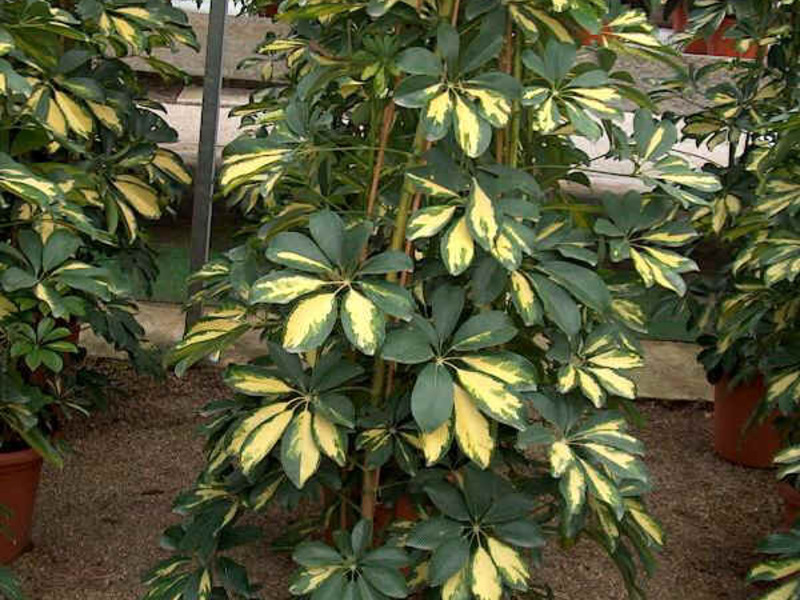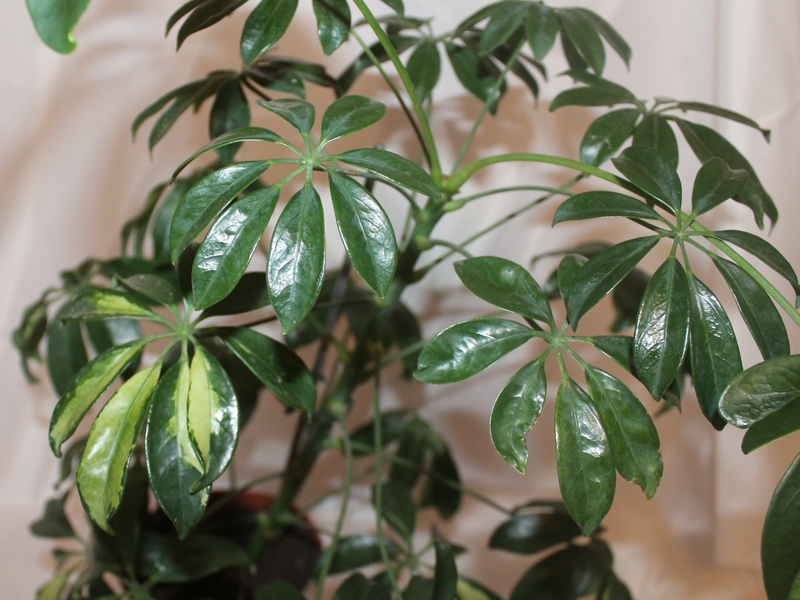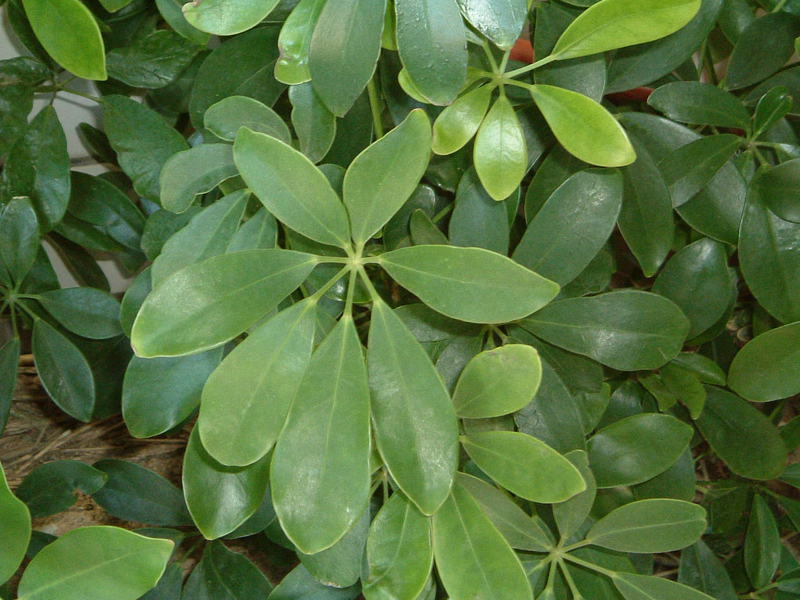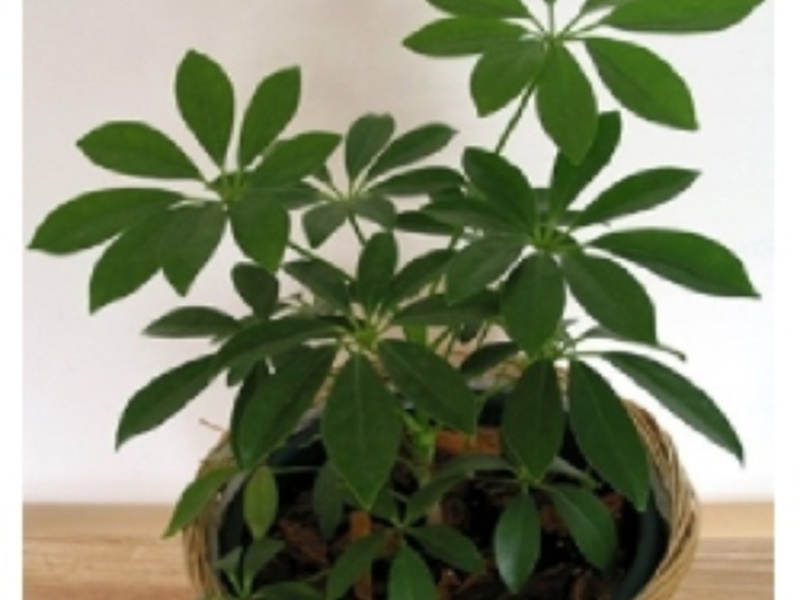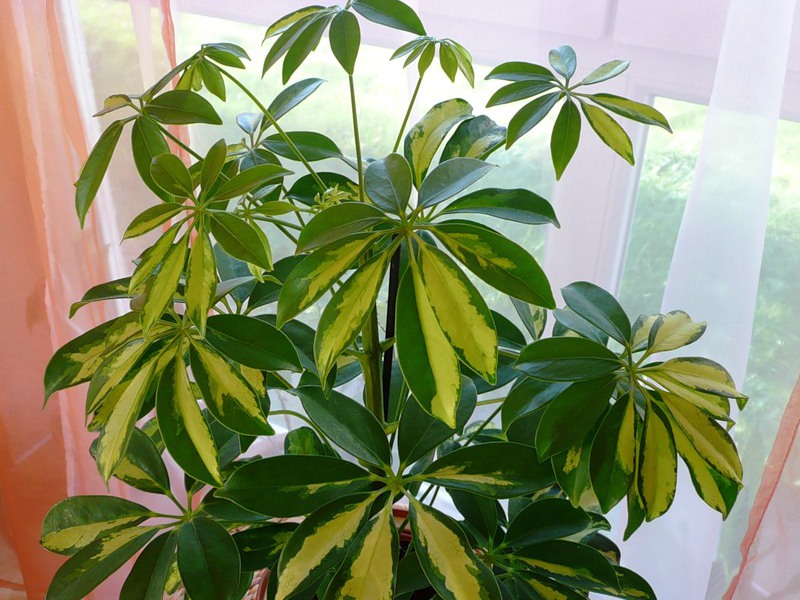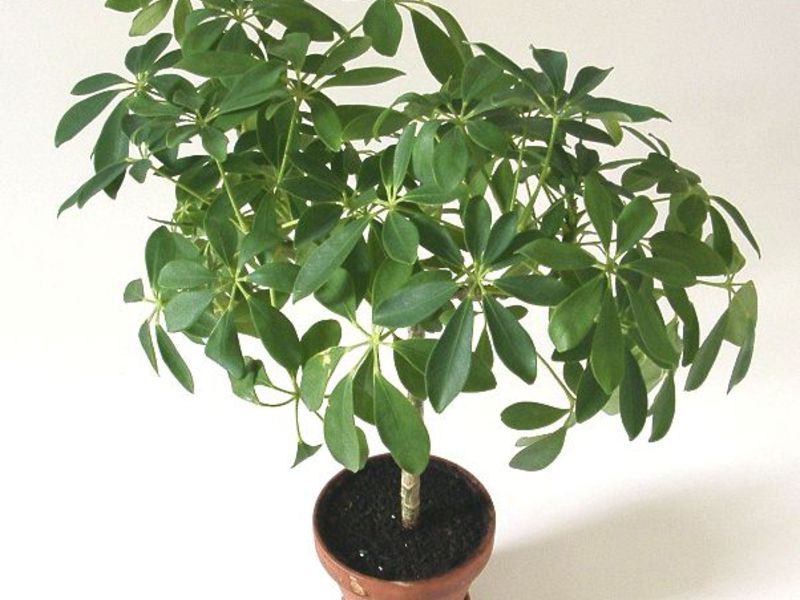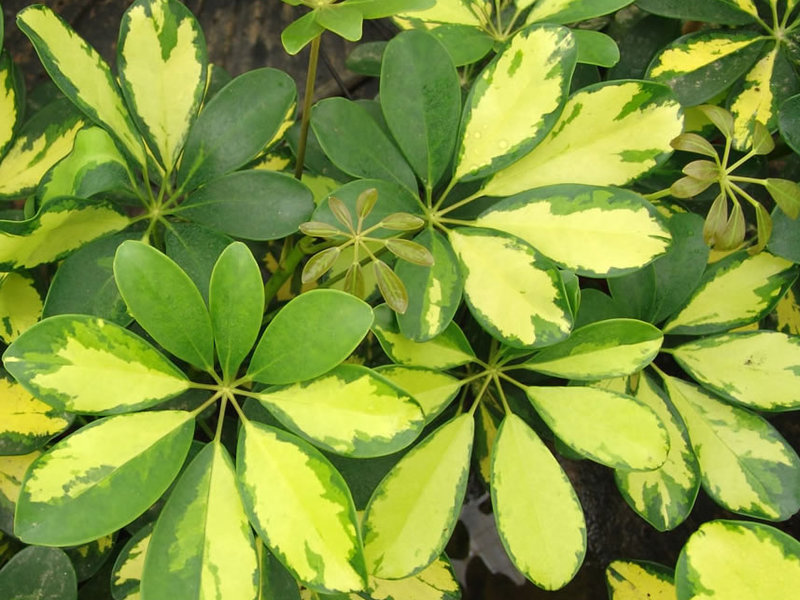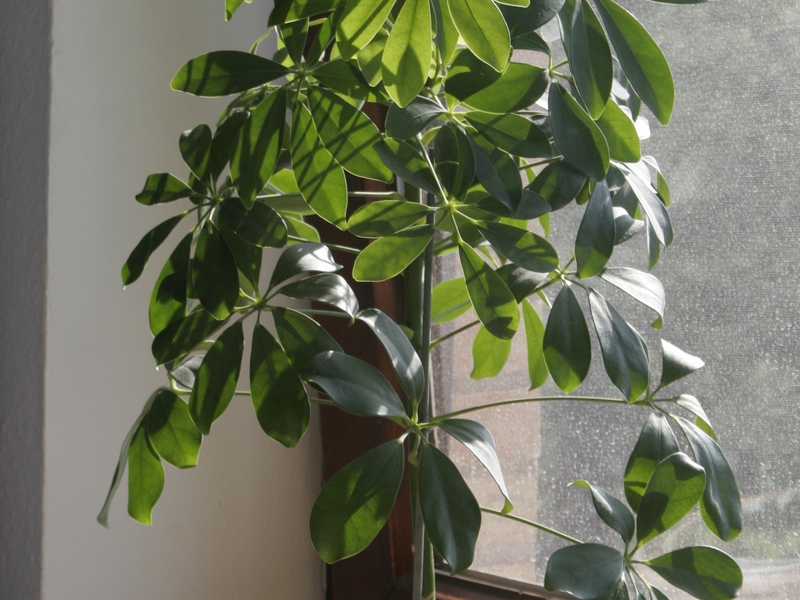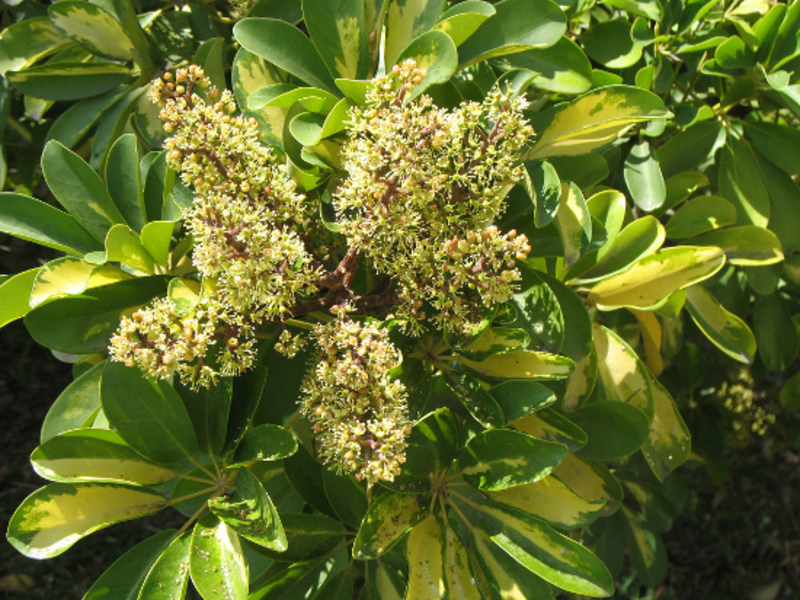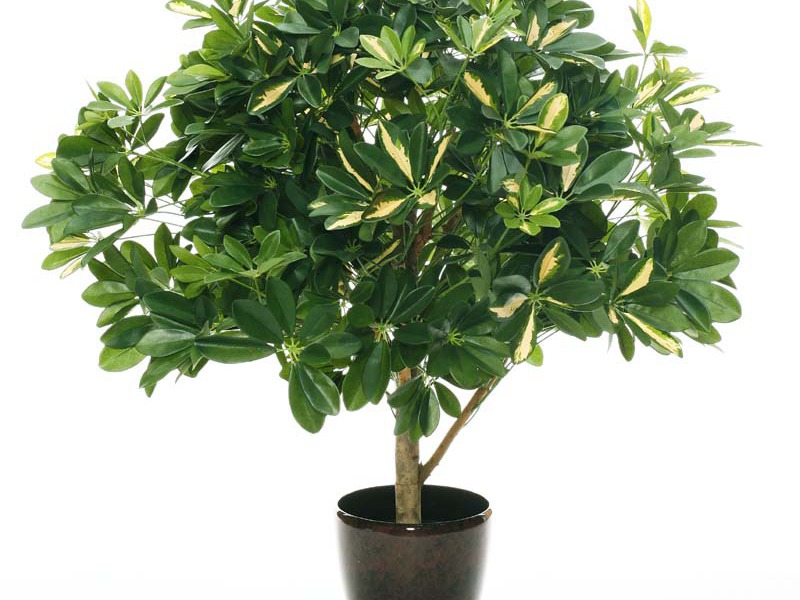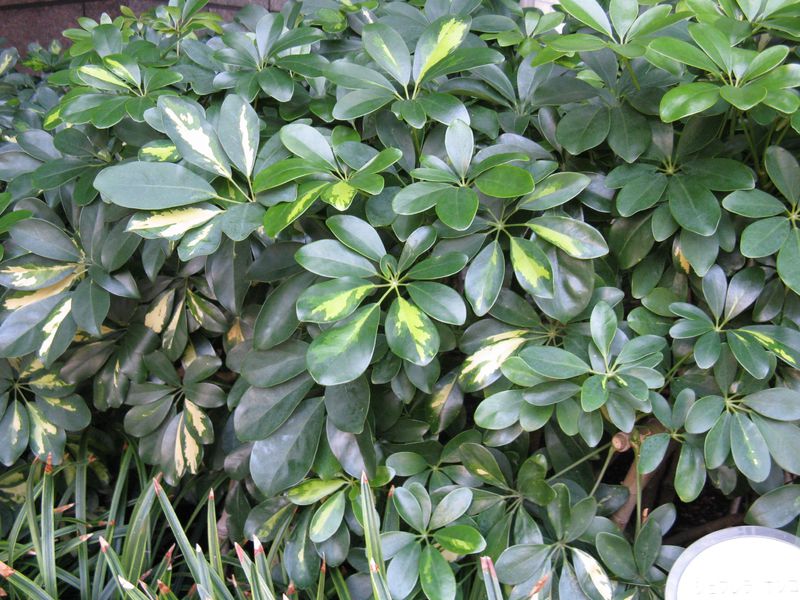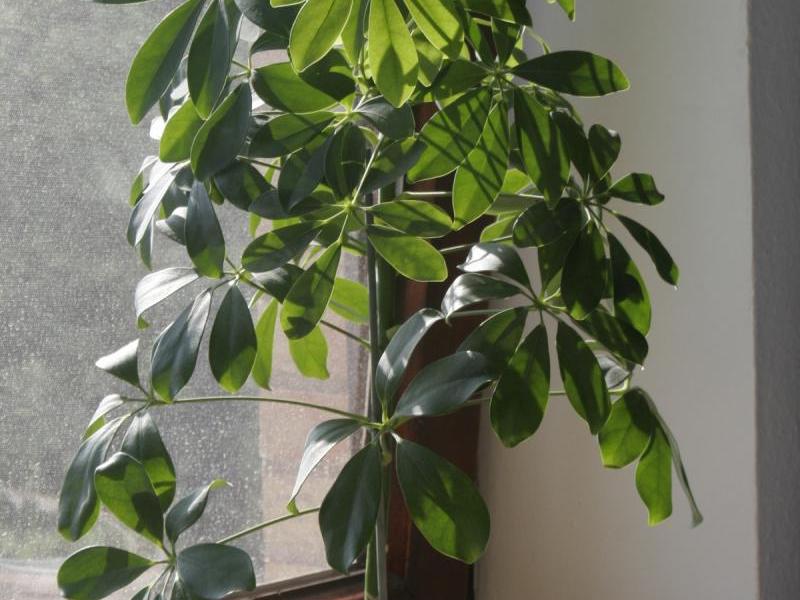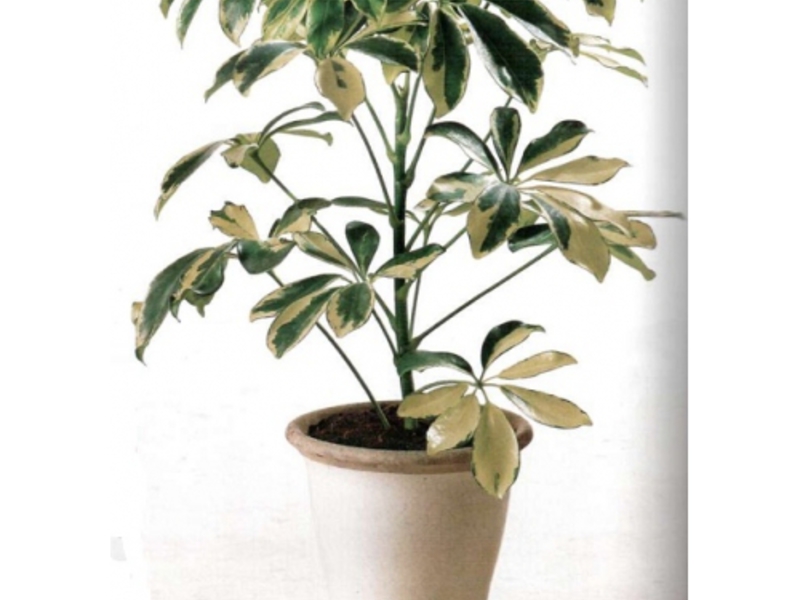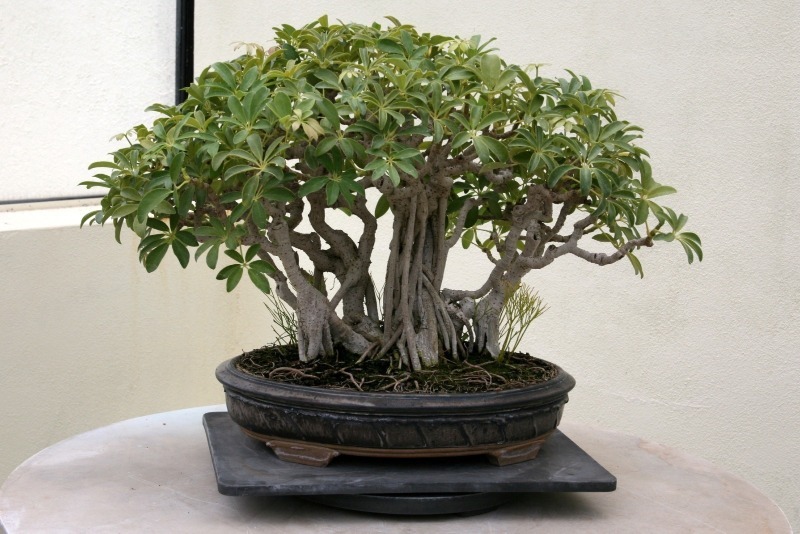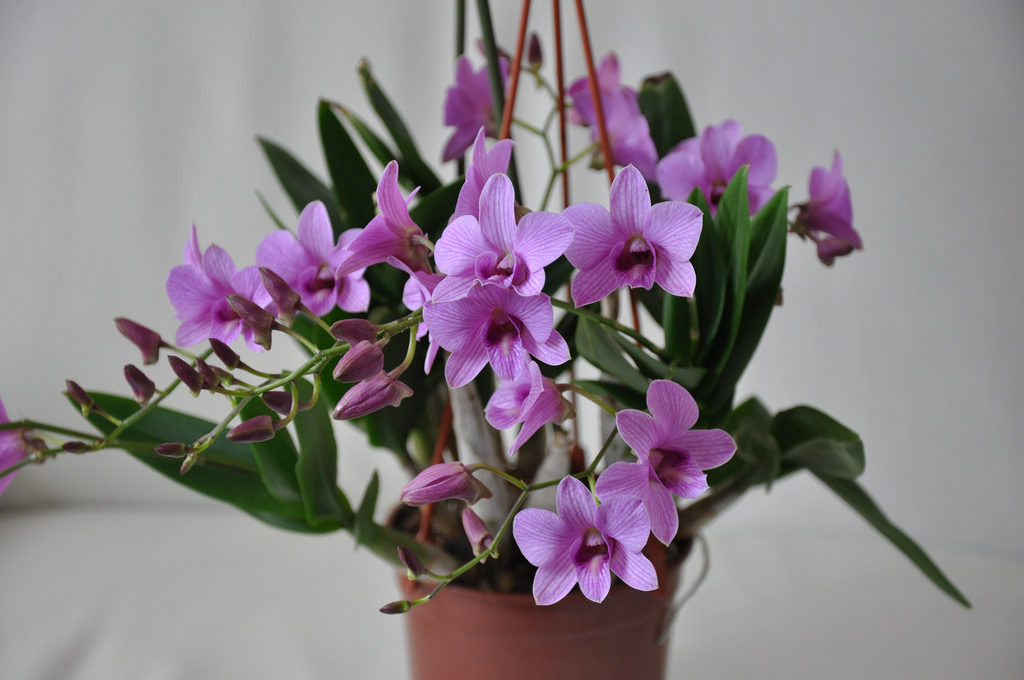Sheflera (or shefflera, from Lat. Schefflera) is a very beautiful plant. Due to its decorative appearance and lack of capricious care, it has become a very popular home flower.
Sheffler looks like a small bush or tree, whose leaves resemble a palm with fingers apart. The sheet is divided into 4-12 parts. To many, such a leaf resembles an umbrella, so the chef is often called a tree umbrella.
At the shefler's home almost never bloomshowever, its tentacle-like flower is still not as effective as the leaves. In addition, such a disadvantage as the lack of flowering and an uninteresting flower, the cheflera is fully compensated by the sheffler's ability to ozonize and humidify the air, as well as neutralize the effects of nicotine and tobacco smoke tar, and at the same time - by simple care.
The plant got its name from the name of the German botanist Scheffler, who lived in the 18th century and was a friend of the famous K. Linnaeus. It belongs to the Araliev family, and this family is distinguished by the variety of both names and appearance. In nature, there are about 200 species of sheffler, they grow in the tropical part of the Earth, are presented in the form of shrubs, trees and even lianas. Their photos are striking in size, color of leaves and their interesting shape.
About a dozen species are grown at home.
Content
Sheffler species
The most popular types of this flower:
- radiant,
- finger,
- tree-like,
- eight-leafed.
All of them look quite attractive and neat at the same time, so they are often found both at home and in offices. If you want to decorate the room with a plant and at the same time maintain the style, the sheffler will perfectly cope with this role. Photos of how to decorate an apartment or office with this plant will help not only to choose the appropriate type, but also to "fit" this flower into the design of the room in the best way.
The radiant, or star-leaved, sheffler differs in the number of leaves in adult leaves - there are 16 of them, at first they are ovoid, then they become oblong, dull at the end, reaching a length of 15 cm and a width of 5 cm. the species grows very quickly and can even reach a height of 3 meters!
The finger shefler has 8 leaves per sheet, they have an elliptical shape, pointed at the end. The leaves are decorated with bright veins. This cheflera is more compact than radiant.
In a tree-like sheflera, the leaves are complex, consisting of 7-16 leaves on long petioles. Leaves reach 9-15 cm in length and 5-8 cm in width, dense leathery, shiny, pointed at the end. This species can be variegated. It grows up to 1.2 m.
Eight-leafed is not very common, although it is also quite decorative. It has 8–12 elongated leaflets pointed at the top of the leaves up to 30 cm long and up to 10 wide with light veins.
Often novice flower growers can get confused in the types of this plant and find it difficult to choose, however, a photo sheffler will help you choose the most interesting type.
In addition, the shefflers many specially bred varieties, which are often found at home and at the same time are equally unpretentious to care.
Popular varieties
- Hayata has light green oval-elongated leaves that are tapered at the tips.
- Geisha Girl features dark green leaves that are rounded at the end.
- Janine is attractive with its striking rounded dark green leaves, which are forked at the ends and covered with cream spots and stripes.
- Variegata has dark green leaves with yellow spots.
Shefflera care
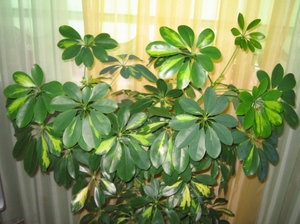 Sheflera is a fairly easy plant to care for. She is unpretentious and, subject to simple rules, will delight you with lush bright foliage. For the home, such a flower is a real find! If you want to have a beautiful plant in your house and at the same time not spend a lot of time caring for it, then the best choice is a sheffler. Home care, photos and videos about which can be found on the net, will not burden almost anyone.
Sheflera is a fairly easy plant to care for. She is unpretentious and, subject to simple rules, will delight you with lush bright foliage. For the home, such a flower is a real find! If you want to have a beautiful plant in your house and at the same time not spend a lot of time caring for it, then the best choice is a sheffler. Home care, photos and videos about which can be found on the net, will not burden almost anyone.
Lighting
Special attention should be paid to lighting. Sheflera likes diffused light, but feels good in partial shade. It can also tolerate direct sunlight for some time, but it is still better to shade it from them in order to avoid burns on the leaves. It is best for the chefler to grow on the western and eastern windows, with green leaves on the northern ones. In winter, it is worth putting the plant in a well-lit place at home and lighting it up, especially if the room is warmer than 17 ᵒС. In the summer, you can take the chefler out of the house to the fresh air, protected from the direct sun.
Temperature
The preferred temperature for keeping cheflers at home is 20 ᵒС. If the temperature exceeds 20 ° C, the cheflera may shed the leaves. Therefore, if it gets cooler at night, then it will not damage the flower. It also sheds leaves if there are drafts or temperature changes.
In winter, the optimum temperature is 14–17 ᵒС. Do not place the plant near heaters and indoor radiators under any circumstances!
Watering and feeding
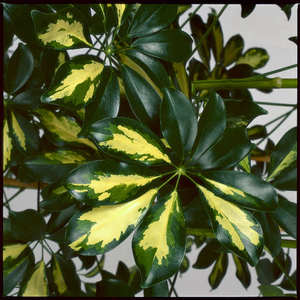 The home chef needs to water regularly, she does not tolerate overdried soil. The flower is usually watered about once every two days, when the soil surface is dry. But it is not worth pouring, the bay hurts her no less, since leads to acidification of the earthy coma... Watering is less frequent in winter than in spring and summer. The water must be soft (it must first be defended) and always warm so that the soil temperature remains at least the ambient temperature.
The home chef needs to water regularly, she does not tolerate overdried soil. The flower is usually watered about once every two days, when the soil surface is dry. But it is not worth pouring, the bay hurts her no less, since leads to acidification of the earthy coma... Watering is less frequent in winter than in spring and summer. The water must be soft (it must first be defended) and always warm so that the soil temperature remains at least the ambient temperature.
Caring for a chefleur involves humid air, so the chef will feel comfortable in a pallet with wet expanded clay. You need to spray the flower every two days. Humidity is especially important in winter, when the room temperature may be too high.
Shefler need to be fed once a week in spring and autumn, once a month in winter. It is best to alternate complex mineral and organic fertilizers for the care of indoor ornamental plants.
Transfer
Shefler is planted several plants in one container, then it takes on a spectacular bush appearance.
Every two years it needs to be transplanted into a pot much larger than the previous one. Sheflera prefers a slightly acidic soil, consisting of two parts sod and one part leafy, humus soil and sand, as well as drainage.
Pests and diseases
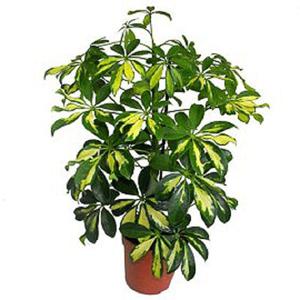 Despite the unpretentiousness of the sheffler, like other house plants, it is susceptible to certain diseases.
Despite the unpretentiousness of the sheffler, like other house plants, it is susceptible to certain diseases.
First of all, she can suffer from the cold. Sheflers in nature are evergreen thermophilic perennials, they are on sale at any time of the year, which means that when purchased in cold weather, the flower may freeze.
As already mentioned, at high temperatures and some other factors, including overflow, excessive humidity and too low temperatures in winter, drafts and sudden changes in the Scheffler temperature can shed leaves... When the cause is eliminated, the leaf fall will stop.
Also, with excessive soil moisture, roots can begin to rot. You can save the plant by removing it from the pot, removing all affected roots and transplanting it into a new pot.If watering or moisture is insufficient, the edges of the leaves will turn brown.
Leaves become faded if the flower does not have enough light; if there is too much light, light spots appear on the leaves.
Most often, the sheffler is damaged by:
- aphid,
- shield,
- spider mite.
When caring for a sick flower, it is quarantined so as not to infect others. For treatment, it is necessary to increase the humidity of the air and treat the chefler with soapy water or insecticide.
Reproduction
You can propagate the chefler cuttings, layering or seeds.
Cuttings
For reproduction, apical or semi-lignified stem cuttings are taken. A mixture of equal parts of peat, sand, leafy and humus soil is best suited for rooting. The cuttings are treated with a root stimulant and heated underneath at 20–22 ° C. When the cuttings are rooted, the temperature should be lowered, and the cuttings should be transplanted into larger pots.
Layers
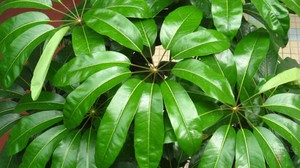 For reproduction by air layers at home, only large specimens are used. For this, in early spring, a small incision is made on the trunk, then wrapped with sphagnum moss and film. The moss must be kept moist.
For reproduction by air layers at home, only large specimens are used. For this, in early spring, a small incision is made on the trunk, then wrapped with sphagnum moss and film. The moss must be kept moist.
After a few months, roots appear at the site of the incision. After another couple of months, the trunk must be cut below the roots and planted in a permanent place.
Schefflera is poisonous... To avoid unpleasant skin reactions, you should wash your hands after handling it.
Seeds
Pre-soaked seeds are sown in January - February in a wet disinfected mixture of equal parts of peat and sand. Seeds germinate at 20-24 ° C. When the first leaves appear, the seedlings are transplanted into pots. For the first three months, they need temperatures of 18-20 ° C. When the roots are entwined with an earthen ball, the plants are transplanted into pots with a diameter of 7-9 cm and the temperature is reduced to 13-15 ° C. In the fall, plants can be transplanted into even larger containers and then take care of as a normal plant.
